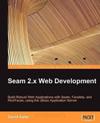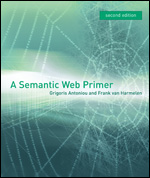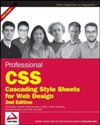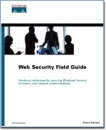作者:David Salter
出版日期:April 27, 2009
出版社:其它
页数:300
ISBN:ISBN-10: 184719592X ISBN-13: 978-1847195920
文件格式:PDF
Product Description
Build robust web applications with Seam, Facelets, and RichFaces using the JBoss application serverDevelop rich web applications using Seam 2.x, Facelets, and RichFaces and deploy them on the JBoss Application ServerIntegrate standard technologies like JSF, Facelets, EJB, and JPA with Seam and build on them using additional Seam componentsInformative and practical approach to development with fully working examples and source code for each chapter of the bookIn Detail
The Seam framework from JBoss allows developers to use JSF,Facelets, EJB, and JPA to write conversational web applications. Butyou will first have to learn how these standard technologies areintegrated using Seam and how they can be built upon using additionalSeam components. If you need to build a Java web application fast, butdon’t have time to learn all these complex features, then this book isfor you.
The book provides a practical approach to developing Seamapplications highlighting good development practices. It provides acomplete walk through to develop Web applications using Seam, Facelets,and RichFaces and explains how to deploy them to the JBoss ApplicationServer. You can start using key aspects of the Seam frameworkimmediately because this book builds on them chapter by chapter,finally ending with details of enterprise functionality such as PDFreport generation and event frameworks.
First, the book introduces you to the fundamentals of Seamapplications, describing topics such as Injection, Outjection andBijection. You will understand the Facelets framework, AJAX, databasepersistence, and advanced Seam concepts through the many examples inthe book.
The book takes a practical approach throughout to describing thetechnologies and tools involved. You will add functionality to Seamapplications after you learn how to use the Seam Generator RAD toolsand how to customize and fully test application functionality. Hintsand tips are provided along the way of how to use Seam and the JBossApplication Server.
What you will learn from this book?
Understand the fundamentals of Seam and why Seam is different from many other web frameworksDevelop web applications using the Facelets viewing technology as an advanced replacement for JSFTest all aspects of a Seam application including testing web pages and Seam componentsUtilize the RichFaces library for developing advanced, rich userinterfaces including AJAX technologies for an improved user experienceDevelop persistent applications using the Java Persistence API (JPA)Build conversational web applications that can run over multiplebrowser windows and tabs without worrying about storing session dataSecure applications using role-based security, CAPTCHA, and OpenIdEasily use Facelets to render data as HTML/PDF/RTF/emailUse JBoss Tools to rapidly enhance your developer productivityApproach
Having developed enterprise Java applications since 2001, theauthor’s experience enables him to provide a clear incremental approachto web development with Seam. Initially the book introduces Seam usingJava Server Pages (JSP) as the view technology so that readers canquickly learn the key concepts behind Seam. Additional technologiesused within Seam applications are then introduced chapter by chapterwith each chapter building on the material previously learned. The bookdescribes each technology, providing working examples and source codefor each.
This is not a dry Seam reference book, but an exciting journeylearning Seam, starting at the basics and progressing by the end of thebook to more advanced enterprise features.
Who this book is written for?
This book is for Java EE application developers who are new to Seam and interested in developing with Seam 2.x.
You will need a basic understanding of Java EE and also to be awareof EJB3, although you do not need to know it in any detail. Experiencewith JBoss AS would be great, but all you really need is to becomfortable using any application server. Knowledge of AJAX andJavaScript would also be beneficial, although it is not necessary.
About the Author
David Salter
David Salter is an enterprise software architect who has beendeveloping software professionally since 1991. His relationship withJava goes right back to the beginning, using Java 1.0 for writingdesktop applications and applets for interactive web sites. David hasbeen developing Enterprise Java Applications using both the J2EEstandards and open source solutions for the last five years. David runsthe Java community web site Develop In Java, a web site for all levelsof Java developers.







 评论 (7)
评论 (7) 